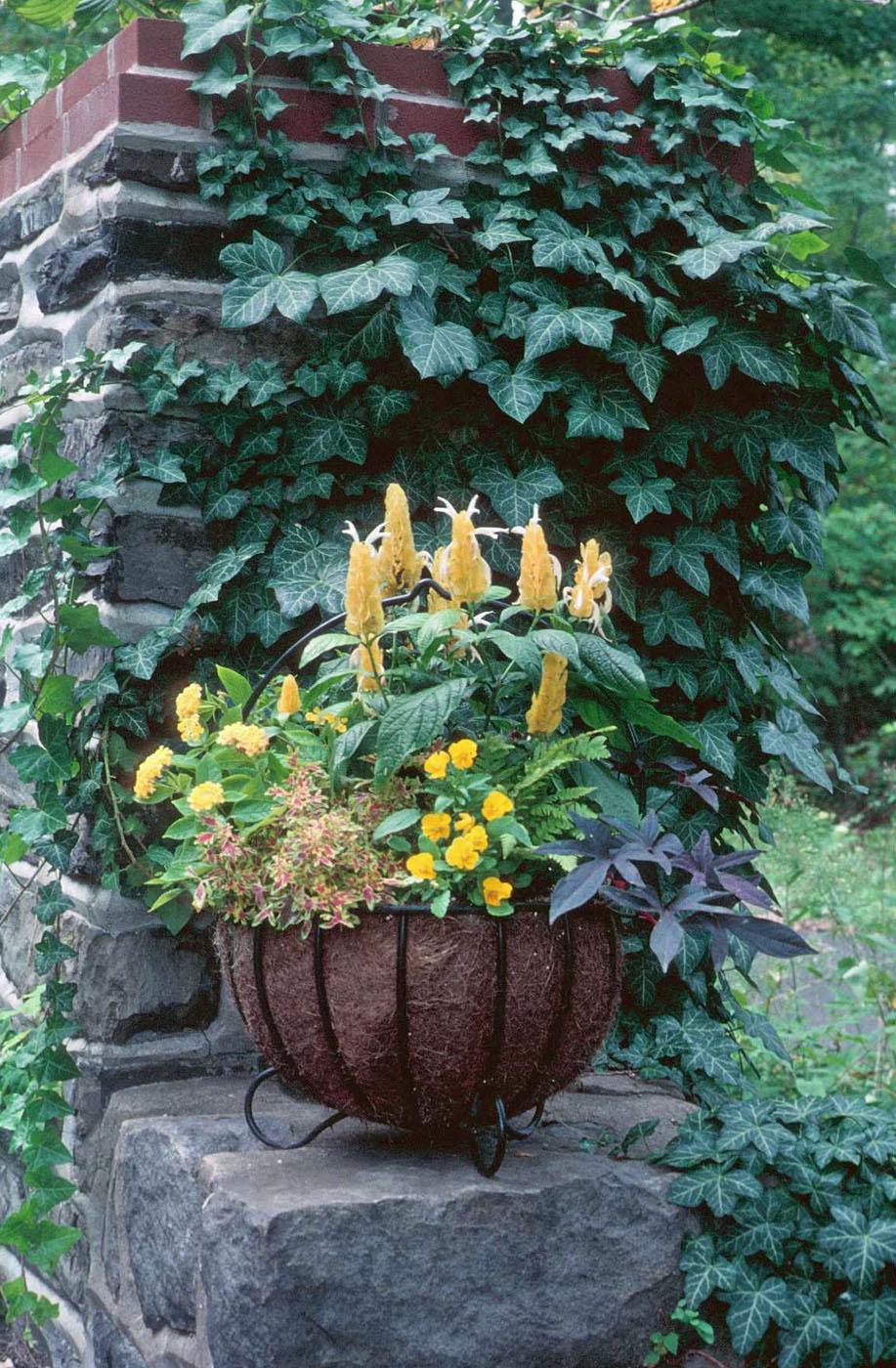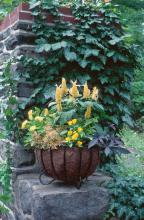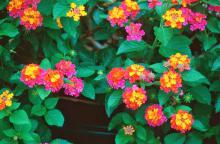Information Possibly Outdated
The information presented on this page was originally released on June 2, 2005. It may not be outdated, but please search our site for more current information. If you plan to quote or reference this information in a publication, please check with the Extension specialist or author before proceeding.
Enthusiastic gardeners create hummer haven
By Norman Winter
MSU Horticulturist
Central Mississippi Research & Extension Center
I got a kick out of the man on late night television recently who had four hummingbird feeders attached to a hat, trying to lure the birds in for a little feasting. I kind of feel that way about these little birds myself.
Natalie Jordan of Raymond feels the passion, too -- the last time I checked in, she was using about 5 pounds of sugar a day for her feeders. But you better believe she also had every plant a hummingbird loves in glorious bloom.
I am a lot like Mrs. Jordan, too. As much as a tiger swallowtail butterfly excites me, I can truthfully say that hummingbirds do more to get me enthusiastic about gardening. Notice I said gardening.
Sure, I like the artificial feeders, but I'm moved when hummingbirds come to my plants. While I'm cooking rib-eye steaks on the grill for my family, nearby the hummingbirds are eating their version in the flower garden.
By planting a garden with a long season of overlapping bloom, we can play host to these miniature birds that fly like they are a cross between a stealth fighter and a helicopter.
Go ahead and use some artificial feeders, but in the flower garden, choose plants like the petunia, annual red salvia (Salvia splendens), blue anise sage (Salvia guaranitica), and two Mississippi Medallion award winners, the yellow shrimp plant (Pachystachys lutea) and Sonset lantana. One of my favorites that is always for sale and often overlooked is the firebush (Hamelia patens).
Native plants like the cardinal flower (Lobelia cardinalis); coral honeysuckle (Lonicera sempervirens), which is not invasive like the Japanese honeysuckle; trumpet vine (Campsis radicans) and Indian pink (Spigelia marilandica) are much loved by hummingbirds. Even in shady flower gardens, we can attract hummingbirds with hostas and impatiens.
Those of you who want the best of both worlds -- hummingbirds and butterflies, that is -- should choose plants like lantana, butterfly bush and butterfly weed. The same recommendation for butterfly gardens holds true for hummingbird gardens -- no pesticides!
The hummingbird can ingest the pesticide, but something many gardeners aren't aware of is that these little acrobats also feed on small insects and spiders. It is a bird-eat-bug world out there.
Besides their flying technique, hummingbirds are unique creatures when it comes to eating. When feeding, they lick up to 13 times a second. Like me, they eat every 10 to 15 minutes from sunrise until sunset and devour more than half their weight in food.
Then, believe it or not, they go to bed hungry -- sort of. They actually have to hibernate through the night, decreasing their heart rate and body temperature, or they reportedly would starve to death. This should make you not only want to grow more flowers, but also take better care of the artificial feeders.
There is a lot more to artificial feeders than simply hanging one in a tree. Nectar from flowers provides more nourishment than sugar water. To provide a better diet, buy packages of instant nectar solution or make your own. To make your own, use 1 part white granulated cane sugar to 4 parts water.
You may be thinking, "This is sugar water, right?" But the big difference is that you need to bring this solution to a boil for 1 1/2 minutes, and then let it cool down. It is not necessary to add food coloring. Now you have a mixture much more similar to that of the flower nectar. Our hot weather can cause rapid bacterial growth, so change solutions every three to five days.
One revelation many of you may find shocking comes from the Texas Parks and Wildlife department. Many people think they should take down their feeders in the fall and winter to encourage the hummingbirds to migrate, but this isn't true.
Whether a bird goes or stays is not determined by your feeder. However, that precious food source might mean life or death to a straggling hummingbird that braves it through the winter north of the tropics.









